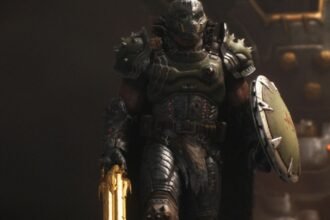HBO’s adaptation of The Last of Us successfully captures the essence of the beloved Naughty Dog games, particularly in how it blocks key scenes. However, this close attention to detail also highlights the differences between the show and the games. While audience members expected certain adjustments—an adaptation needs to justify its existence—some of the creative changes have drawn mixed responses. According to the showrunners, these alterations were intentional and thoughtfully considered.
During a recent press event focused on season 2, showrunners Neil Druckmann and Craig Mazin engaged in an in-depth discussion about the upcoming season. Conversations frequently returned to the contrasting strengths of video games and film, which shaped their decisions about what themes to explore within the show.
On the Cliffhanger Ending
By the conclusion of season 2, the series leaves Ellie’s fate uncertain. The last scene implies that she may have been fatally shot by Abby, only to switch to a completely different day before any such event occurs.
The team explored various alternate endings, but nothing resonated as strongly. "This always felt like the natural conclusion for the season," Druckmann noted.
Mazin elaborated, explaining that this decision helped balance the story’s changes leading up to that moment. He remarked, "We must take risks as a television show, and HBO supports our willingness to do so. However, we just killed Pedro Pascal. They recognize this series will change with each season, which can be tricky when you have a hit show. You keep telling viewers, ‘I know you love this, but now we’re presenting you with something different.’ We hope they respond with, ‘Oh, you know what? We actually enjoy this.’"
On Introducing Gail as a Character
Druckmann mentioned they have a "running list" of opportunities more accessible in each medium, with perspective shifts falling under the television category. Unlike games, where players are confined to a specific character’s viewpoint, TV can naturally shift between storylines and characters.
Mazin added, “In games, there are perspective shifts in cut scenes, but they are limited by design. They have to be.” He noted that television feels like continuous cut scenes.
This flexibility influenced the creation of Gail, a therapist who listens to Joel. Joel struggles to open up to her, as revealing his past actions—including the killing spree he undertook to save Ellie—would require confronting uncomfortable truths. Gail highlights the necessity of vocalizing tough emotions, illustrating this by stating her deep-seated hatred for Joel—rooted in the fact that he killed her husband, Eugene, after he was infected.
“So, Gail provided us a moment to explore Joel’s emotional state and the narrative he’s constructed for himself,” Mazin explained. “This challenges him to confront the truth and ultimately face the consequences of his actions.”
Game players will recognize that The Last of Us Part 2 begins from Abby’s vantage point, the daughter of a doctor murdered by Joel. The video game kept this detail a secret from gamers, even crafting trailers to imply that Joel remains alive throughout Ellie’s journey. Translating such surprises to television is challenging because “we cannot replicate the shock of becoming another person,” according to Mazin.
“In games, you are Joel, you are Ellie, you are Abby, and when that perspective changes, it’s jarring because you’ve truly inhabited that character. On the screen, we observe all characters equally. We may empathize with them differently at times but are distinct from them.”
In the season 2 finale, Ellie seeks Abby at an aquarium. The game features a grim scene where Ellie kills a dog named Alice there, which does not occur in the series. The interactive nature of the game renders Alice’s death particularly harrowing, as players grow attached to the canine companion throughout Abby’s storyline.
Why omit such a moment? Mazin, known for his work on Chernobyl, referenced a segment in that show depicting an effort to cull abandoned pets due to a nuclear fallout.
"I think you can excuse one episode with a dog death in a lifetime," he quipped. "Hollywood has two cardinal rules: don’t spend your own money, and don’t kill a dog."
However, there’s more nuance. He continued, “Additionally, because this is live-action, violence is inherently more graphic. Without animation to buffer us, the impact is far more disturbing.”
Druckmann pointed out that the aquarium is nestled between several heavy plot points, including Ellie’s near-death experience and the significant losses of Mel and Owen, followed by Jessie’s demise. "In our discussions, we felt that might be one tragedy too many," he said.
On Differences in Character Development
In the games, players don’t learn about Ellie’s conversation with Joel on the night before his death until much later. The show, however, reveals this crucial exchange right away. In this version, Joel confesses to Ellie that his actions to save her from the hospital were out of love—something she may not fully grasp.
"This difference highlights the adaptation process. Pedro’s portrayal of Joel shows a









